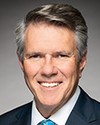Hello.
My name is France Robertson. I am an Innu woman from Mashteuiatsh, in the Lac-Saint-Jean area. I have been living in Montréal, an urban environment, for 23 years. I am the director of the Lanaudière Native Friendship Centre and vice-president of the Quebec federation of native friendship centres.
First of all, I'd like to note that we are on Atikamekw territory. I thank the Atikamekws. The Manawan community is right next door. I think it's important to underscore that.
The Native Friendship Centre movement has been active in Canada for more than 60 years. There are 118 such centres in Canada, including six provincial and territorial associations, as well as the National Association of Friendship Centres, or NAFC. In the province of Quebec, the provincial federation is called the Regroupement des centres d'amitié autochtones du Québec.
The Native Friendship Centre movement has been present in Quebec for more than 45 years. The first friendship centre opened in Chibougamau, in 1969. During the 1970s, centres opened in Val-d'Or, La Tuque, Montreal, Senneterre and Quebec City. The Joliette centre is relatively new; it opened in 2001. These cities were already meeting places for indigenous citizens, who converge there to get access to services, and settle there permanently.
More and more indigenous people are leaving First Nations communities, which you call reserves, to settle in urban communities so they can study, work, or have a better life, or for health reasons. In the Joliette area, 60% of the indigenous population are Atikamekw who still speak their language.
We are the largest First Nations services infrastructure in Canadian cities. The Native Friendship Centres have a shared vision, namely, to improve the quality of life of Aboriginal citizens who live in urban areas or are transiting through such areas. They are multi-service centres in urban environments for indigenous clients—that is, First Nations, Métis and Inuit people—but they have an open-door policy without distinction based on status, nation or place of residence.
We are Aboriginal democratic and non-partisan community organizations, and we work in a spirit of complementarity with the partners in our communities. Our movement's strength is based on our democratic structure, which enables all indigenous citizens to express their aspirations and take part in the decision-making process aimed at achieving objectives, by sitting on our boards of directors and attending the annual general meetings, and which takes their experience as consumers of services into account so that the services can be improved and made more responsive to their needs.
Our management and governance structures are oriented toward indigenous citizens. Accordingly, our primary commitment is to indigenous people who live in or are transiting through cities.
The trend of indigenous people moving to the cities continues to grow: 60% of indigenous people live outside reserves. In Quebec, more than half the indigenous population—53.2%—live in a city. The trend is getting more pronounced. There is a lot of talk about Quebec's aging population, but our own population is young: 55% of us are 25 or younger. More and more young people are settling in the cities.
I'm going to digress for a moment. Although it's considered a civic duty, I've only voted twice. When I left my community, I felt there was no point to voting—that it was not about indigenous people. I saw no interest in doing so, and felt it didn't concern me. I questioned what it would change, given that the candidates who get elected are not indigenous people, and that the Indian Act remained in force. That was always my attitude. But one day, an elder told me that if we want to change something, we have to change our attitude, get involved, and go vote so that things will change. I've voted twice, and am proud of it. I also talk to my children about the importance of voting. I would never have thought that I would talk about voting systems one Friday afternoon in Joliette. Thank you, Mr. Ste-Marie!
I know that you'll be hearing from very few indigenous people, but in my opinion, it is very important to hear them.
I heard Mercédez discuss the voting system in considerable detail earlier. For our part, we are making great efforts to raise our sisters' and brothers' awareness of the importance of voting. But we need the voting system to adapt to our approach—to our way of doing things.
In the most recent election campaign, the 2015 campaign, the Friendship Centre movement put a lot of effort into raising indigenous people's awareness of the importance of exercising their voting rights. We created an elections program to help indigenous people understand that they needed to vote—that it's a civic duty. We really mobilized. At the Joliette centre, we met with the candidates from each party, to ask them questions. We asked them which elements of their election platform affected indigenous people. They shared with us the issues that were part of their party's platform, but they also shared their personal preoccupations about Atikamekws and their families living in Joliette.
Later, we organized a workshop. We invited our members—our families—to come hear the presentations of the various candidates. We analyzed each party's platform. Our purpose was not to tell people to vote for a given person or platform. Rather, it was to present our issues, and to see what importance each party and each candidate was according to those issues. We also wanted to explain to participants how to get on the voter list, and to share with them the reasons it's important to vote and to determine which party is closest to our Aboriginal values. That's the kind of reflection we had with the families.
It's not enough to tell families that it's important to vote, and that it's a citizen's duty and right. That's not how I was made a voter. I was made a voter when I was told that a certain party thinks Aboriginal people are important, that it listens to them, and that, for these reasons, it's important to go out and vote—to cast a vote for a certain party, or a certain candidate. Those are the points we raised, and our people went out and voted.
We knew that Aboriginal voters had to surmount a variety of obstacles in order to exercise their voting rights. We knew they were unfamiliar with the electoral process, and had trouble finding information about parties and candidates. We knew that the cards we could submit as proof of identity do not make reference to a place of residence, and that our nations are still largely nomadic today. Even though we have reserves, many families remain nomadic. So, at the polling station, presenting the elector's card with a residence address is a challenge. Some people lose it, while others don't go and get it, or don't feel like it. Aboriginal people often tend not to vote when an obstacle arises. For all these reasons, we looked for a way to facilitate the process, in order to encourage indigenous voters to exercise their civic duty.
In order to counter the lack of motivation and interest among indigenous people, we invested a lot of effort in motivating them to exercise their right to vote. We shared easy-to-understand information about the way the electoral system and the voting process work. We also used social networks to mobilize our members. This included Facebook, a powerful communication tool. We facilitated sharing of information about political parties and local candidates. I thought that was very important, and I thank the parties and candidates, who were very cooperative. Aboriginal people accord considerable importance to the interest shown in them, and can anticipate the impact their votes will have.
In addition, we offered transportation to the polling station on voting day. It's banal, but important. We generally offer transportation to our activities, and we decided to do that on election day as well, to encourage our members to get out and vote.
You now know how much importance we ascribe to raising indigenous voters' awareness about voting. Friendship centres are non-partisan organizations, and it's important to respect that fact.
The most important thing for us is that people be able to vote.
Few indigenous people vote in federal or provincial elections. According to Elections Canada, 30% of First Nations living in Quebec communities were able to vote in the 2011 federal election, compared to 63% in the rest of Canada. We know that in the last election, there were Aboriginal candidates—there was talk of this—and we were very proud of them.
The important thing to us, truly, was that people be able to vote, and not just for a party running Aboriginal candidates. We certainly hoped Aboriginal candidates would be elected, but it was more important to us that changes be made to programs. For example, right now, urban populations are a growing challenge. This was important to us.
I hope that, one day, by exercising my right to vote, we will achieve nation-to-nation dialogue. This won't happen tomorrow, but I hope that, one day, each First Nation will be told that it can vote and that everything is possible. I know that the Indian Act won't be abolished tomorrow, but if Aboriginal people are called upon to vote, it could happen one day.



